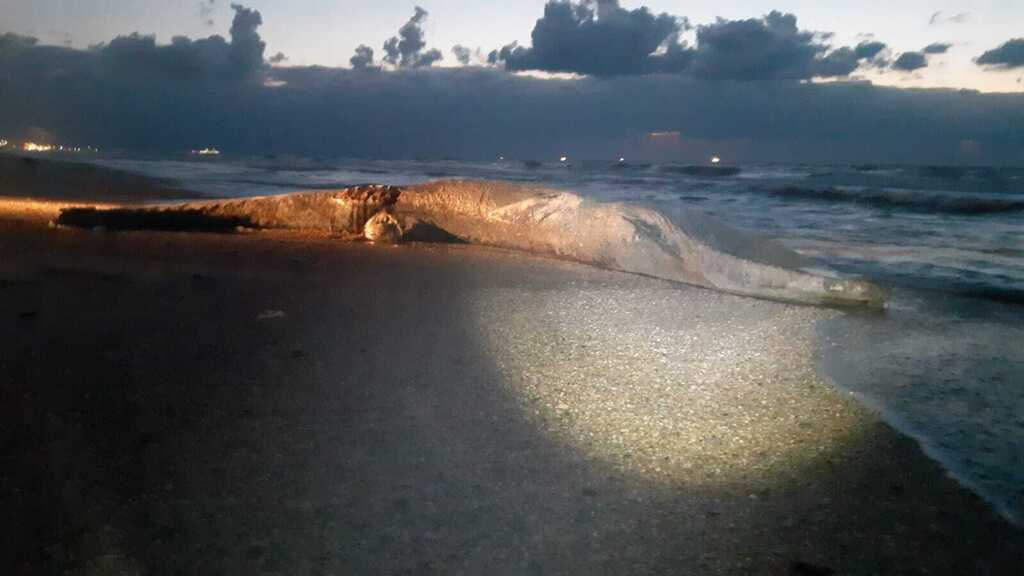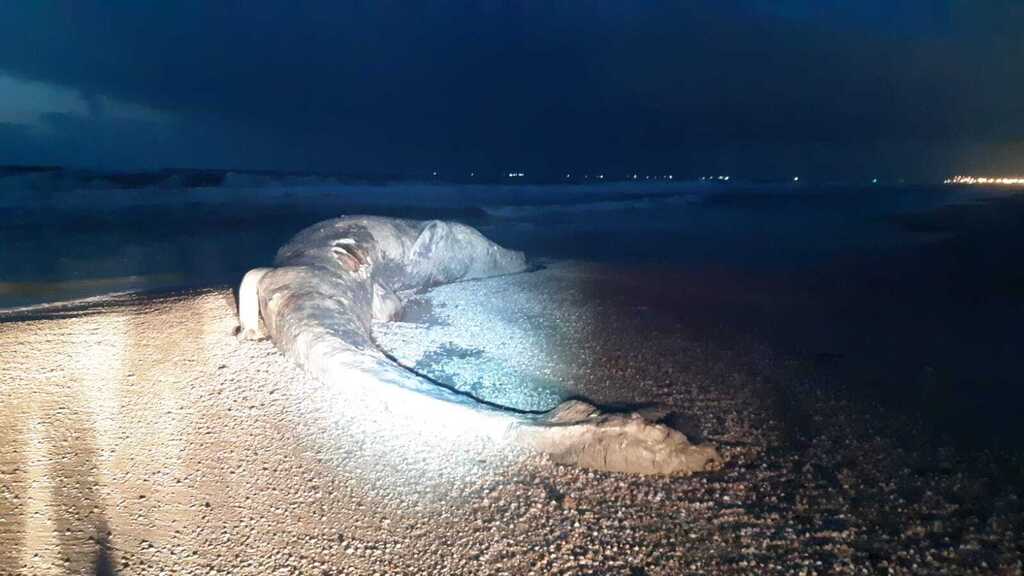
The common whale carcass is found in the Nitzanim Reserve
(Photo: David Halfon, Nature and Parks Authority)
4 View the gallery


It is estimated that this is a puppy of a common whale
(Photo: David Halfon, Nature and Parks Authority)
Dr. Aviad Sheinin of the Morris Kahn Marine Research Station and the Delphis Association said, “This is a very likely whale.” He added that about two weeks ago, two reports of whales were received off the coasts of Herzliya and Ashdod.
4 View the gallery


The carcass of the whale on the beach
(Photo: David Halfon, Nature and Parks Authority)
On the whale whose carcass was found, Dr. Sheinin said: “This is a young individual about 10 meters long. In the Mediterranean they reach 20 meters and in the oceans they reach 24 meters. It is the second largest animal in the world after the blue whale. They are common in the western Mediterranean, but rare in the eastern basin. “
The Director General of the Nature and Parks Authority, Shaul Goldstein, added: “The tar pollution incident turns out to be a very large and very serious incident with very large environmental damage, which will take us a long time to deal with. We call on the Ministry of Environmental Protection to investigate the incident.” “. Regarding the pollution of the sea itself, Goldstein said: “The pollution of the sea that we see today from north to south is one of the worst we have ever known in Israel.” He called on the public to volunteer and help clean the beaches.
The Minister of Environmental Protection, Gila Gamliel, also referred to the pollution and said that “we will find those responsible and find justice with them.” Gamliel instructed the ministry’s director general, David Yahalomi, to contact members of the Marine Pollution Prevention Fund to make use of the approved budget item to fund emergency cleanup operations.
Seagulls and sea turtles were affected by the tar that reached the shores of Israel
(Photo: Yossi Hahn, and David Halfon, Nature and Parks Authority)
The source of the pollution is still unknown, and it seems that it is the emission of oils or oil from a vessel that passed off the coast of Israel. In this type of incident, when the source of the contamination is unknown, the cleaning operations are carried out by the owners of the emergency plans – mainly the coastal local authorities.
But unlike a situation where there is a known source that can be sued for cleaning expenses, in the current situation there is no source of contamination, and therefore there is also no source of claim and indemnification for the cleaning expenses.
The Ministry of Environmental Protection’s Marine Unit is in contact with the REMPEC Center in Malta (Regional Center for Response to Marine and Coastal Pollution in the Middle East) and the European Agency EMSA, in an attempt to examine possible sources for this type of incident.
Coastal local authorities began this morning, where the sea and storm conditions allow, in the actions of cleaning the beaches of the tar blocks that landed from the sea along the coastal strip from the Nahariya area to Ashdod. Due to the storm that continued this morning, the damage to the beaches and marine creatures has not yet been assessed.
Tar pollution on Habonim Beach
(Photo: Matan Carmel, Nature and Parks Authority)

